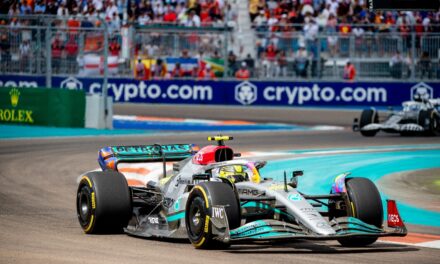Justifying sponsorship returns: How media equivalency undervalues your sponsorship and exploring alternative measurement approaches

Show me the money! The pressure on Marketing Directors to justify sponsorship investments is unrelenting. Summoned to the boardroom, clinging to the familiar crutch of media value equivalency (MVE) calculations, hoping to prove the worth of multimillion-dollar endeavours. Yet, beneath the surface of these seemingly concrete figures lies a gaping chasm of inadequacy.
MVE, the go-to metric for measuring sponsorship, offers a simplistic view of success: Did we get a good price? But the truth is far more complex. MVE fails to capture the intangible yet invaluable shifts in brand perception and consumer behaviour that truly drive revenue growth. As Marketing Directors are forced to defend their sponsorship decisions, they must continue to grapple with the fundamental question posed by Finance Directors that MVE fails to answer: How does this sponsorship actually generate revenue for the company?
In this article, we delve deep into the shortcomings of MVE in sponsorship measurement, uncovering why it falls short of providing a holistic understanding of sponsorship impact. From overlooking changes in brand perception to neglecting the CFO's demand for tangible revenue generation, we explore the inherent limitations of MVE and propose alternative approaches to accurately evaluate sponsorship ROI.
MVE is, without doubt, a helpful benchmark for assessing sponsorship strength. It is particularly useful for brands whose sponsorship campaigns place visibility as the first, second and third priority. However, as Solo Stove’s viral Snoop Dogg ‘Giving Up Smoke’ partnership showed, increased brand visibility does not automatically equal increased sales. Remarking on the partnership Solo Stove Chief Financial Officer Andrea Tarbox said:
“while our unique marketing campaign raised brand awareness of Solo Stove to an expanded and new audience of consumers, it did not lead to the sales lift that we had planned, which, combined with the increased marketing investments, negatively impacted our EBITDA.”
While, of course, this could simply be a case of over-forecasting, the point remains that increased awareness only tells half a story. The true value of sponsorship is the ability to alter and enhance stakeholder behaviour both in the short and long term.
What are the values that drive demand in the banking sector? Trust? Integrity? Security? All are true, and consumers' perceptions of such attributes can all be enhanced through sponsorship. Yet MVE overlooks increases in perception of these key brand values brought about by sponsorship. Consequently, when conducted in isolation, an MVE calculation serves to undermine and undervalue an effective sponsorship campaign's true worth.
In contrast to the limited scope of MVE, a more comprehensive and accurate measure of a sponsorship's worth lies in the market approach. This method considers a wide range of data points, including but certainly not limited to a comprehensive MVE calculation, to ascertain the strength of a sponsorship opportunity. The approach considers broader factors concerning the reputation, history, fan demographics, reach and social behaviour of a team or event. By applying these factors to the commercial realities of sponsorship deals agreed upon within the industry, the market approach offers a more holistic understanding of sponsorship's true value. This is also the approach used by The Sponsor in the annual study of Premier League Fair Market Value calculation which you can view here.
Unfortunately, this is all before we consider the fact that both MVE and the market approach fail to address the burning question raised by CFOs: How does this sponsorship generate revenue for the company?
For this, a more complex and rigorous valuation model is required: The income approach. The income approach is a methodology commonly used by tax authorities when valuing intangible asset transfers or CFOs when undergoing merger and acquisition transactions. Firstly, it assesses the fundamental role of the brand in generating revenue for the company within its respective industry. This involves analysing historical royalty rate agreements to determine the typical value of a brand's contribution to revenue generation. Secondly, the approach evaluates how changes in brand strength, facilitated by sponsorship investments, can enhance this revenue-generating capacity over time. By quantifying the impact of sponsorship on brand sentiment and consumer behaviour, the income approach establishes a direct link between sponsorship activities and their potential to boost revenue. Furthermore, unlike MVE, it speaks in a language familiar to the boardroom, which marketing proponents find particularly helpful when negotiating next year’s budget!
Each of these sponsorship measurement and valuation approaches has its own strengths and applicability depending on the specific needs and objectives of your sponsorship initiatives. For personalised guidance tailored to your unique requirements, we invite you to connect with The Sponsor's dedicated consulting team here. Schedule a complimentary consultation today to explore how we can assist you in accurately quantifying returns and justifying your sponsorship investment.








